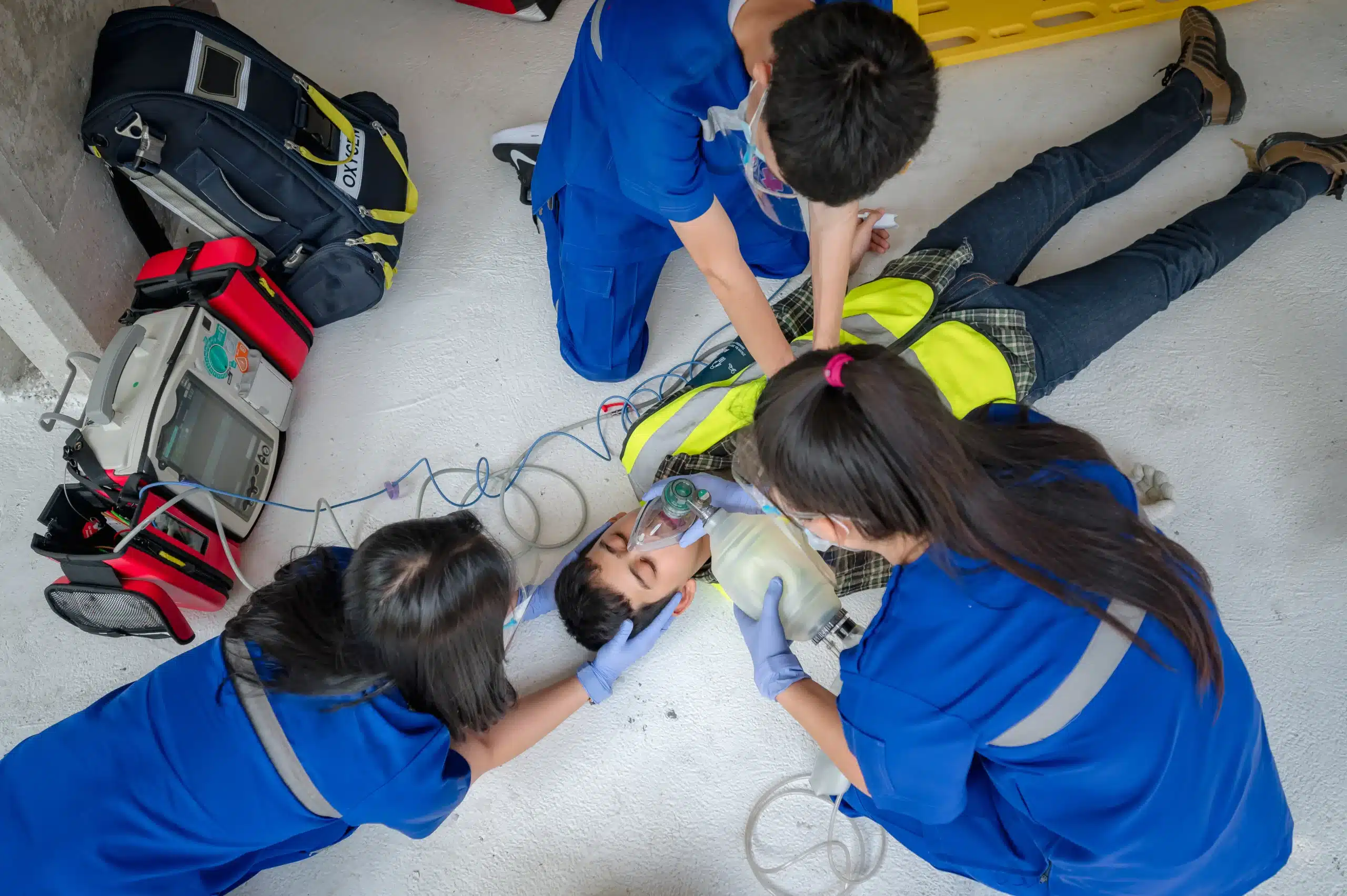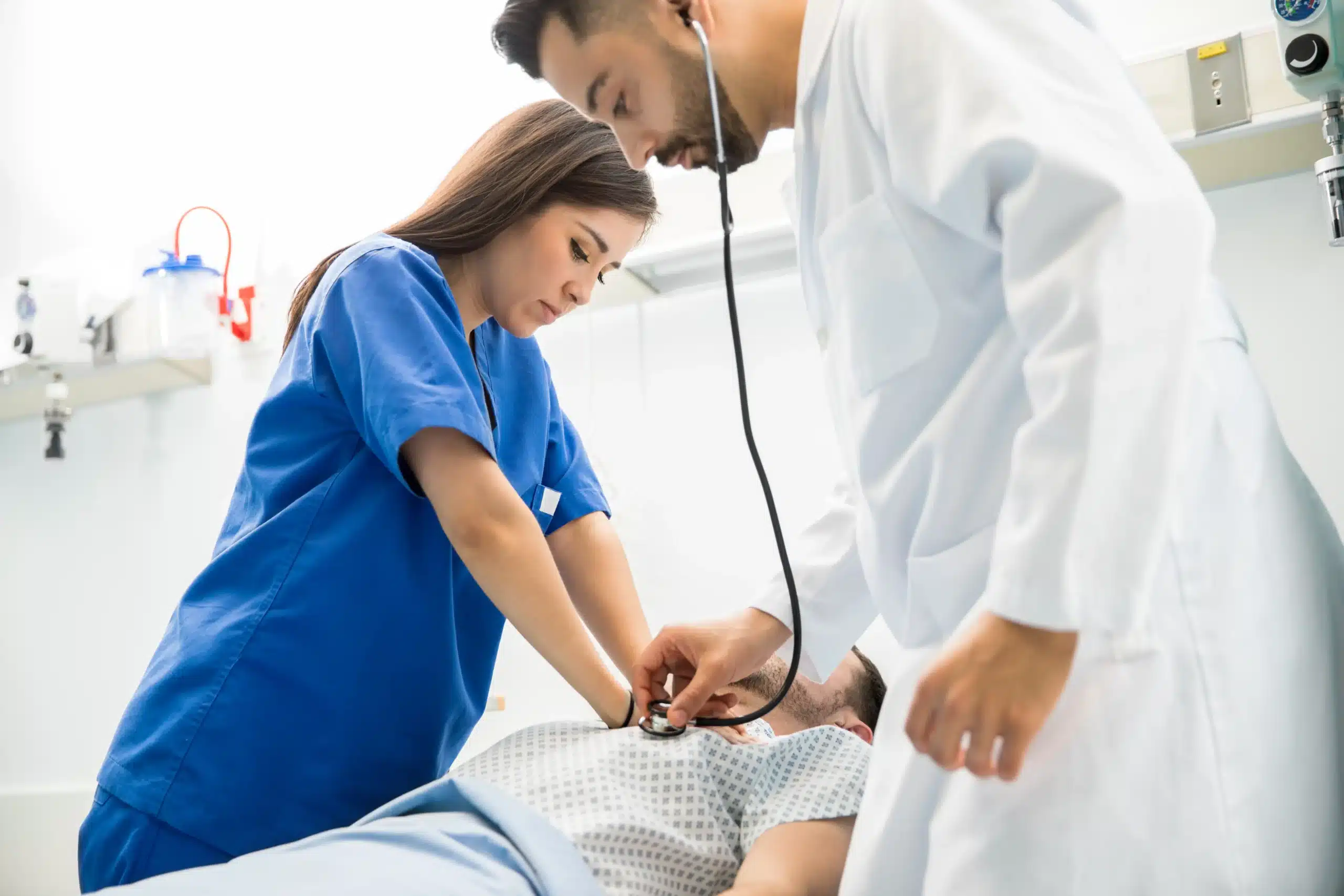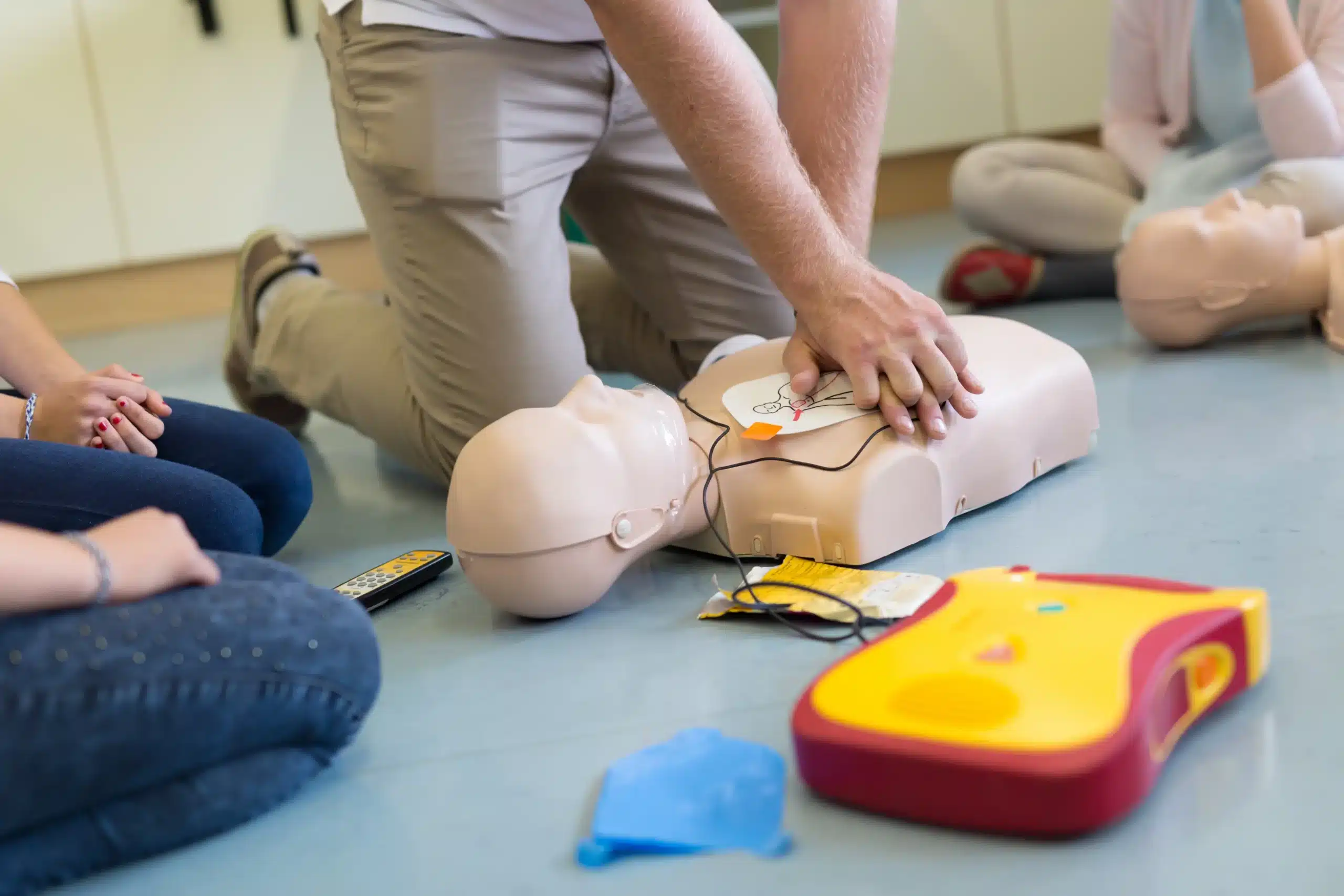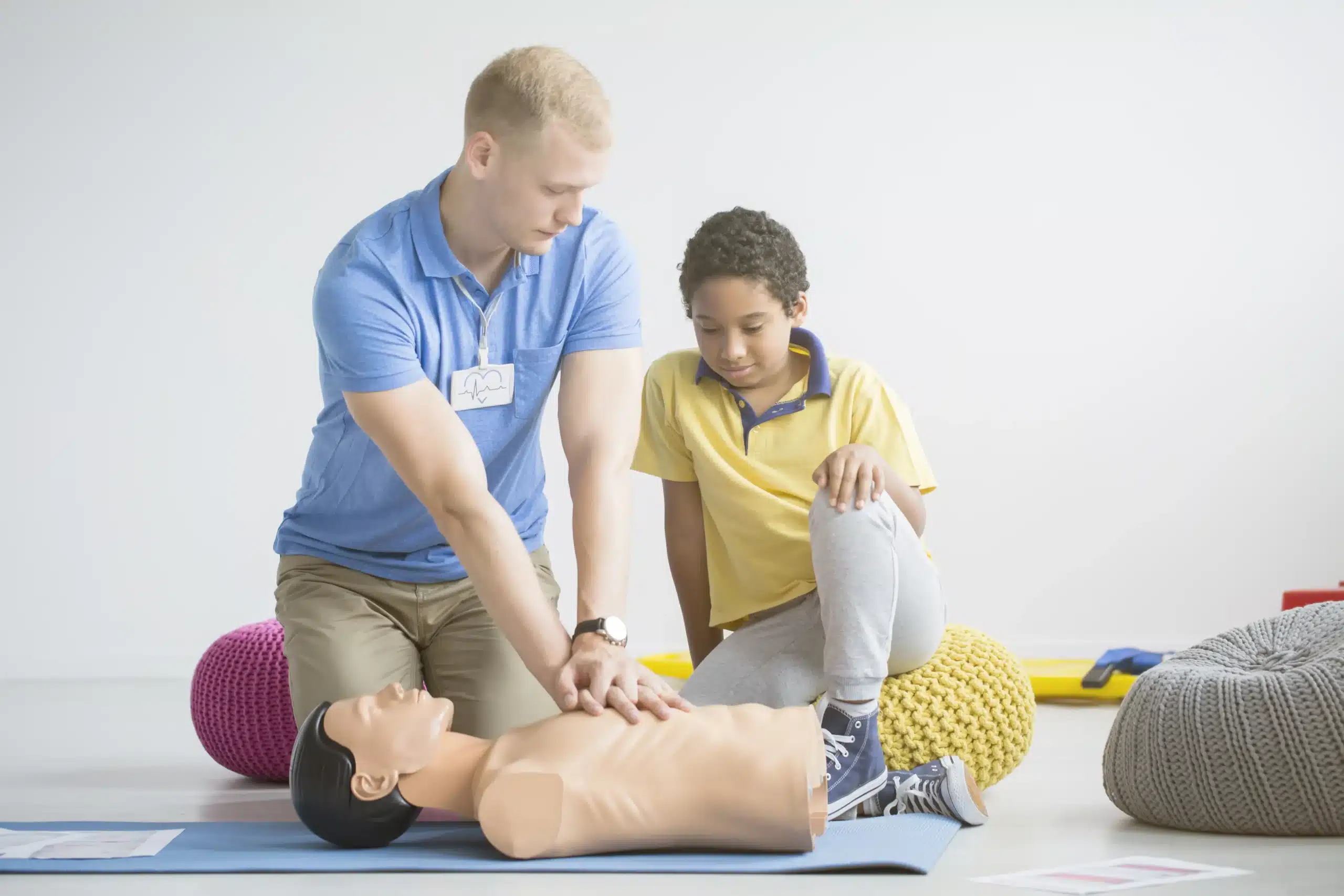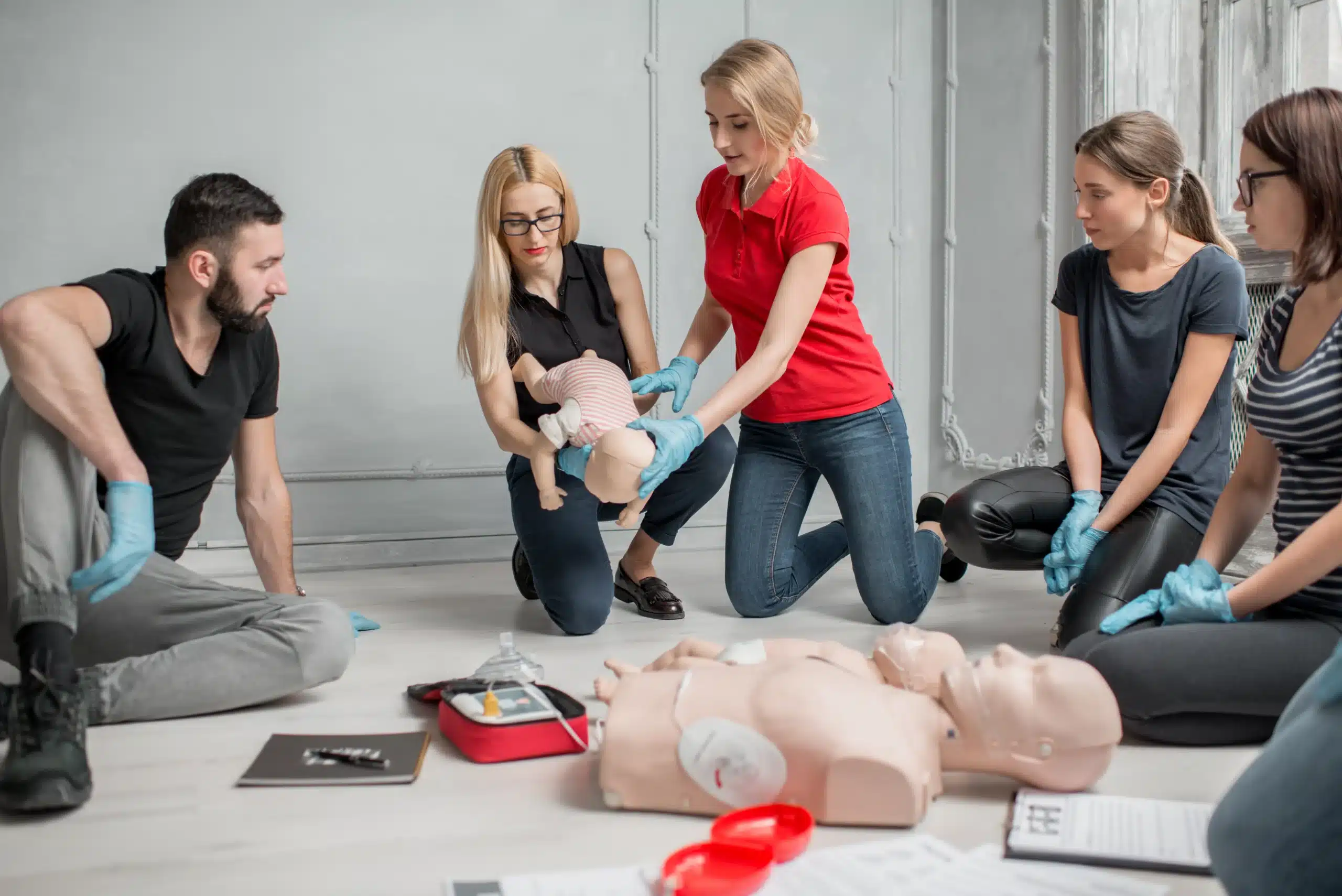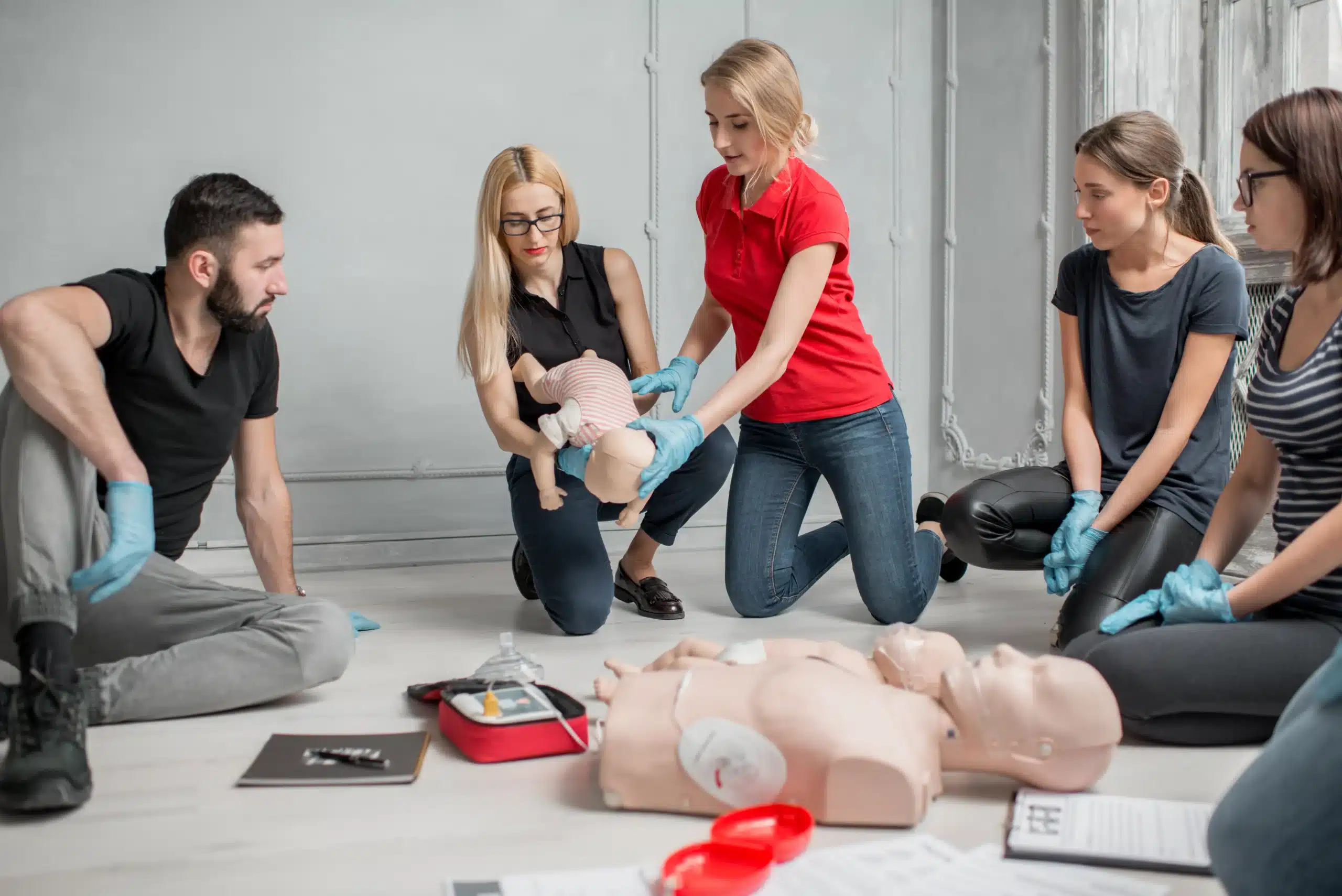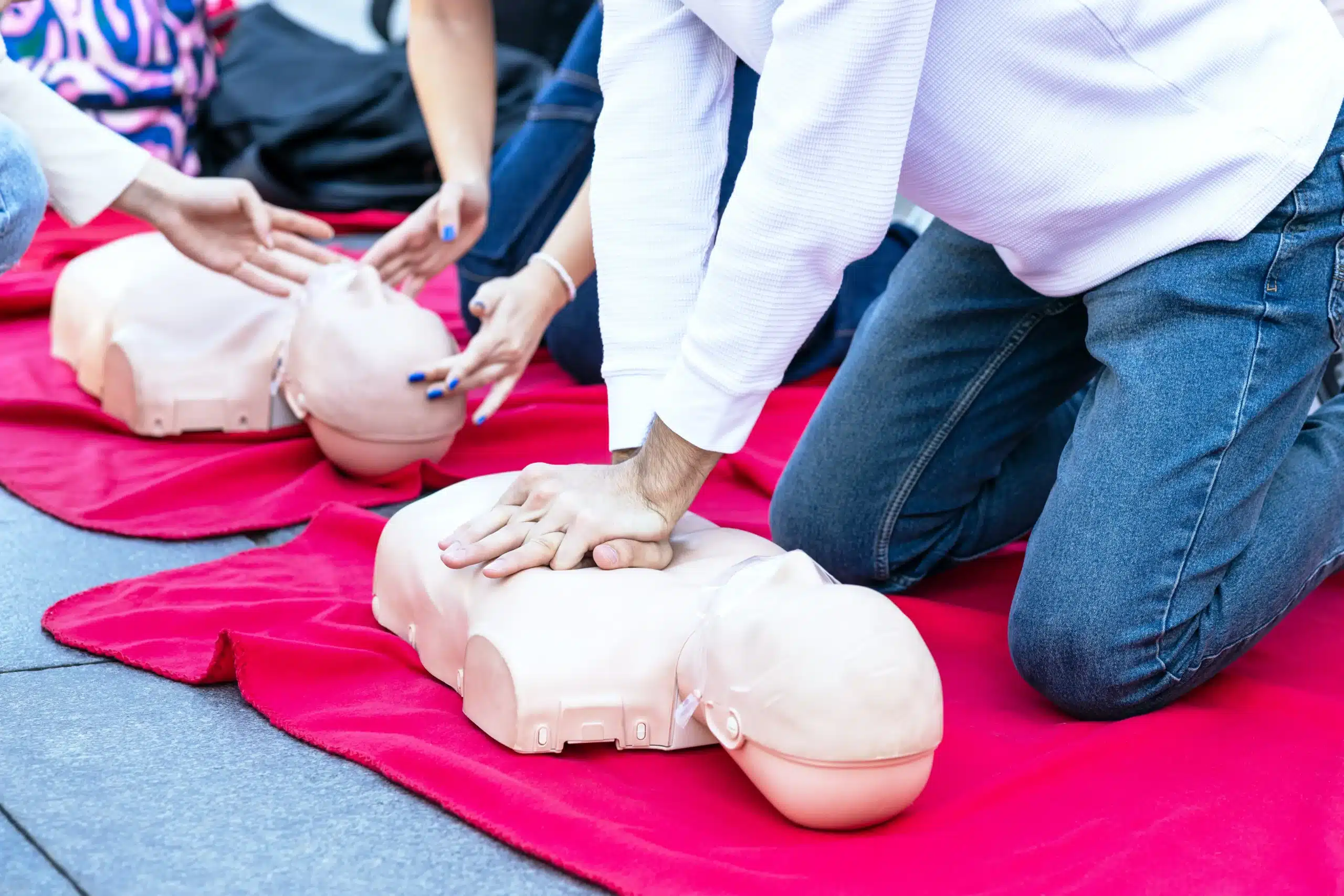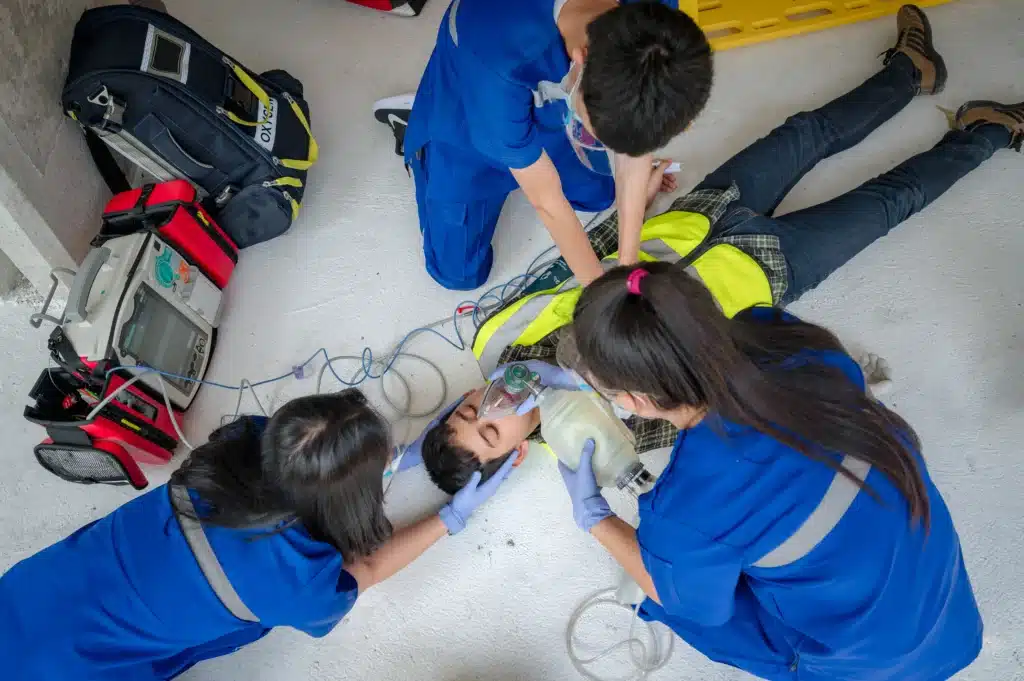In San Pablo, being prepared for a medical emergency can make all the difference. CPR certification San Pablo empowers you with the skills and confidence to respond effectively during critical situations, potentially saving a life. This comprehensive guide walks you through the essentials of CPR certification in San Pablo, covering everything from choosing the right course (BLS, ACLS, PALS, and more) to finding reputable training centers and understanding the certification process. Whether you’re a healthcare provider, a concerned parent, or simply someone wanting to be more prepared, we’ll equip you with the knowledge and resources you need to get certified and make a difference in your community.
Key Takeaways
- CPR certification empowers you to respond effectively in emergencies. Knowing how to perform CPR can make a real difference while waiting for professional medical help. Find a course and get trained.
- Safety Training Seminars offers convenient, AHA-certified CPR courses in San Pablo, CA, serving the surrounding communities. We provide various courses, including BLS, ACLS, PALS, and first aid, with flexible schedules to fit your needs.
- Invest in your community and yourself by learning CPR. It’s a valuable skill that can save lives. Contact Safety Training Seminars to find a course and get certified.
Why CPR Certification Matters in San Pablo
CPR—cardiopulmonary resuscitation—is a life-saving technique used when someone’s heart stops beating. Learning CPR equips you with the skills to respond effectively during cardiac arrest emergencies. While you don’t technically need formal CPR certification to perform CPR, a structured course ensures you’re properly trained and confident in your abilities. Think of it like knowing how to change a tire—you could figure it out in a pinch, but prior learning makes the process smoother and more effective when it truly matters. This preparedness is especially crucial in San Pablo, where quick action can significantly impact survival rates. CPR training is crucial for ensuring individuals can respond confidently and competently in these emergencies.
CPR training empowers individuals to act confidently in emergencies. Knowing how to assess a situation, perform chest compressions, and provide rescue breaths can be crucial while waiting for professional medical help. This confidence creates a more prepared community, equipped to handle these critical situations. Richmond Training Concepts discusses the importance of dispelling common CPR myths to empower individuals to act effectively. CPR certification isn’t just about a credential; it’s about gaining practical skills and confidence to potentially save a life. Consider it an investment in yourself and your community. San Pablo CPR classes, often affiliated with organizations like the American Heart Association, provide the knowledge and practice necessary to respond effectively under pressure. Effective CPR can bridge the critical time between cardiac arrest and the arrival of paramedics, increasing the chances of a positive outcome. It’s a skill that can truly make a difference in San Pablo and beyond.
CPR Certification Courses: What Are Your Options?
Choosing the right CPR certification course depends on your background and goals. Here’s a breakdown of common CPR certifications available in San Pablo:
BLS for Healthcare Providers
BLS (Basic Life Support) for Healthcare Providers is fundamental for anyone working in healthcare. This certification covers core life-saving skills like CPR, using an AED, and relieving choking. It’s essential for doctors, nurses, paramedics, and other healthcare professionals. AHA (American Heart Association) certified BLS classes prepare you to handle emergencies.
ACLS
ACLS (Advanced Cardiac Life Support) certification builds on the skills learned in BLS. This advanced course is designed for healthcare providers who manage cardiopulmonary arrest and other cardiovascular emergencies. ACLS covers topics like airway management, rhythm recognition, and teamwork. AHA-certified ACLS classes often offer blended learning—online coursework combined with in-person skills practice.
PALS
PALS (Pediatric Advanced Life Support) focuses on the needs of infants and children in medical emergencies. If you work with young patients, PALS certification is a must-have. This course covers pediatric resuscitation techniques, medication administration, and communication during emergencies. Safety Training Seminars offers AHA-certified PALS classes in San Pablo.
Heartsaver CPR AED
Heartsaver CPR AED courses are great for anyone who wants to learn CPR and how to use an AED. These AHA-certified courses teach essential life-saving skills. They’re ideal for teachers, coaches, parents, and anyone who wants to be prepared.
First Aid & CPR Combo Courses
Combining First Aid and CPR training into one course offers a well-rounded approach to emergencies. These combo courses cover treating injuries, performing CPR, and using an AED. They often meet OSHA requirements and are certified by organizations like ASHI (American Health and Safety Institute) and the Red Cross.
Find a Reputable CPR Certification Provider
When you’re ready to get CPR certified, finding a trustworthy training center is essential. Here’s what to consider:
AHA Certification: What to Look For
The American Heart Association (AHA) sets the standard for CPR training. Make sure any course you take uses the AHA’s curriculum so you receive high-quality, evidence-based instruction and a certification recognized nationwide. This is especially important for healthcare providers and those working in medical professions. AHA certification ensures you’re learning the most up-to-date techniques and protocols.
Safety Training Seminars: Your Local AHA-Certified Training Center
Safety Training Seminars, a woman-owned business, has provided AHA-certified courses to the San Pablo community since 1989. We offer various classes, from basic CPR to advanced certifications like ACLS and PALS, all taught by experienced instructors. Our convenient San Pablo location serves Richmond, Berkeley, and Oakland, making it easy to find a class that fits your schedule. Contact us today to learn more about our offerings.
Qualified Instructors & Course Content
Beyond AHA certification, look for classes taught by qualified, experienced instructors. Ideally, your instructor should have a background in healthcare, such as an EMT, paramedic, or registered nurse. This real-world experience brings valuable insights to the classroom. Also, confirm the course content covers adult, child, and infant CPR, as well as AED training and how to respond to choking emergencies. Comprehensive training will prepare you for a wide range of emergency situations.
Other Reputable Providers in San Pablo
While we’d love for you to train with us, we understand you might be exploring all your options. Other reputable organizations offering CPR certification include:
Red Cross
The American Red Cross is a well-known provider of CPR and first aid training. Their certification is widely accepted.
National Safety Council
The National Safety Council offers various safety training programs, including CPR certification. Their courses are often geared towards workplace safety.
American Safety & Health Institute (ASHI)
ASHI provides CPR and first aid training that meets OSHA requirements. If you need certification for your workplace, ASHI is another provider to consider. You can learn more about their CPR and first aid training on their website.
Cost & Value of CPR Certification
Getting CPR certified is an investment in yourself and your community. But what does it actually cost, and what do you get in return? Let’s take a look.
Course Pricing
CPR course fees vary depending on the certification level you need. Basic CPR and First Aid courses are generally the most affordable, while more advanced certifications like ACLS and PALS for healthcare providers usually have a higher price tag. Safety Training Seminars offers competitive pricing and works to keep our rates the lowest in Contra Costa County. Visit our website for current pricing. Classes run daily from 8 am to 10 pm.
Group Discounts & Online Options
Training with a group? Ask about our group discounts! We frequently offer special rates, making it more affordable to learn together. We also provide online resources, like our RQI program, for many courses to help you prep for the in-person skills test. Reviewing these materials beforehand can really improve your chances of passing the test the first time.
Low Price Guarantee
We believe we offer excellent value. Safety Training Seminars has a low price guarantee; we’ll match any lower advertised price for a comparable course in Contra Costa County. This means you can get top-notch training at a fair price.
Long-Term Benefits
Your CPR certification is more than just a credential—it’s a skill that can make a real difference. You’ll get your certification card, valid for two years, on the same day you finish the class. Consider it a two-year membership to a group of people ready to respond to emergencies. The confidence of knowing how to react in a crisis is priceless.
Get CPR Certified: Process & Renewal
Getting your CPR certification is straightforward and empowers you to make a real difference. This section walks you through the process, from enrollment to renewal, so you can feel confident and prepared every step of the way.
Enroll in a CPR Course
Finding the right CPR course is the first step. Organizations like the American Heart Association offer various courses designed to meet different needs, from basic CPR and first aid to advanced certifications like BLS for healthcare providers. Browse course descriptions to find one that aligns with your goals. Once you’ve chosen a course and date, register online through a secure enrollment system. CPR and First-aid courses in San Pablo are readily available.
What Happens During Training?
CPR training blends classroom instruction with hands-on practice. Our AHA-certified courses ensure you receive high-quality, credible training. During your session, you’ll learn essential techniques like chest compressions, rescue breaths, and how to use an AED. Instructors use mannequins and real-world scenarios to help you build muscle memory and confidence. You’ll also learn to recognize the signs of cardiac arrest and how to respond quickly and effectively.
Certification Validity & Renewal
Upon completing your CPR course, you’ll receive a certification card valid for two years. This card demonstrates your CPR proficiency and is often required for certain jobs or volunteer positions. Remember to keep your certification current. Check the expiration date and sign up for a renewal course before it lapses. This ensures you’re always prepared to provide assistance in an emergency.
Maintain Your CPR Skills
CPR skills, like any skill, can fade over time. Staying sharp between renewals is key to providing effective assistance when needed. Consider refresher courses or practice sessions to keep your techniques fresh. You can also stay updated on the latest CPR guidelines by reviewing resources from the American Heart Association. Even simple steps like reviewing the steps for CPR or watching videos can reinforce your knowledge and maintain your readiness.
Flexible Learning & Busting CPR Myths
Finding the right CPR class format and understanding the realities of training can make all the difference in your learning experience. Let’s explore some common questions and misconceptions surrounding CPR training.
In-Person vs. Blended Learning
Getting your CPR certification is a critical step towards being prepared for emergencies. High-quality training blends the latest guidelines with hands-on practice. At Safety Training Seminars, we emphasize the importance of in-person training because it provides the crucial hands-on experience and real-time feedback you need to confidently respond in a crisis. Improving CPR training is an ongoing process, and staying up-to-date with the latest techniques is essential for effective life-saving skills. Supplementing your in-person training with online resources can be a great way to reinforce your learning.
On-Site Training for Groups & Businesses
We understand busy schedules can make it tough to coordinate training. That’s why Safety Training Seminars offers on-site CPR training for groups and businesses in San Pablo and surrounding areas like Richmond, Berkeley, and Oakland. Whether you have a small team or a large corporation, our instructors can come to your location, eliminating the need for your team to travel. This convenient option makes it easier for everyone to participate and get certified.
Classes Available Daily
We offer CPR and first-aid classes seven days a week, from 8 am to 10 pm. This flexibility makes it easier to fit training into your schedule, whether you’re a busy professional, a student, or a parent. Visit our website to view our calendar and register for a class.
Common CPR Training Myths
One common myth is that only medical professionals need CPR training. The truth is, anyone can learn CPR and potentially save a life. Organizations like the American Heart Association provide courses designed for people of all backgrounds. Don’t let misconceptions hold you back from gaining this valuable skill. Learn more about common CPR myths and discover how you can make a difference.
Physical Requirements & Accessibility
While CPR does involve physical activity, don’t let concerns about physical limitations discourage you from pursuing this important training. If you have any questions about the physical aspects of the course, please contact us. We’re happy to discuss any accommodations or alternative approaches. We also understand that schedules change, so rescheduling is always an option if needed.
Related Articles
- CPR Certification in Berkeley: Your Guide – San Pablo CPR Classes
- Why CPR is Essential in Saving Lives
- CPR Myths You Need to Stop Believing Now – CPR Classes
- Online CPR Classes Oakland: Your Complete Guide – San Pablo CPR Classes
- CPR Certification in Richmond: Your Guide – San Pablo CPR Classes
Frequently Asked Questions
What’s the difference between BLS and Heartsaver CPR?
BLS (Basic Life Support) is designed for healthcare providers and covers a broader range of skills, including using an AED and two-rescuer CPR. Heartsaver CPR is geared towards the general public and focuses on essential life-saving techniques for adults, children, and infants.
How long is a CPR certification valid, and how do I renew it?
CPR certifications are typically valid for two years. To renew, you’ll need to take a recertification course before your current certification expires. This ensures your skills and knowledge are up-to-date.
Do I need to be a healthcare professional to take a CPR class?
Absolutely not! CPR training is beneficial for everyone, regardless of profession. Knowing CPR can empower you to assist family, friends, or even strangers in an emergency.
Does Safety Training Seminars offer on-site training for my company?
Yes, we offer on-site training for groups and businesses throughout San Pablo and the surrounding areas. This convenient option allows your team to get certified without disrupting their work schedules.
What if I have physical limitations? Can I still learn CPR?
While CPR involves physical activity, modifications and accommodations can often be made. Contact us to discuss your specific needs, and we’ll work with you to find a suitable approach to training.
